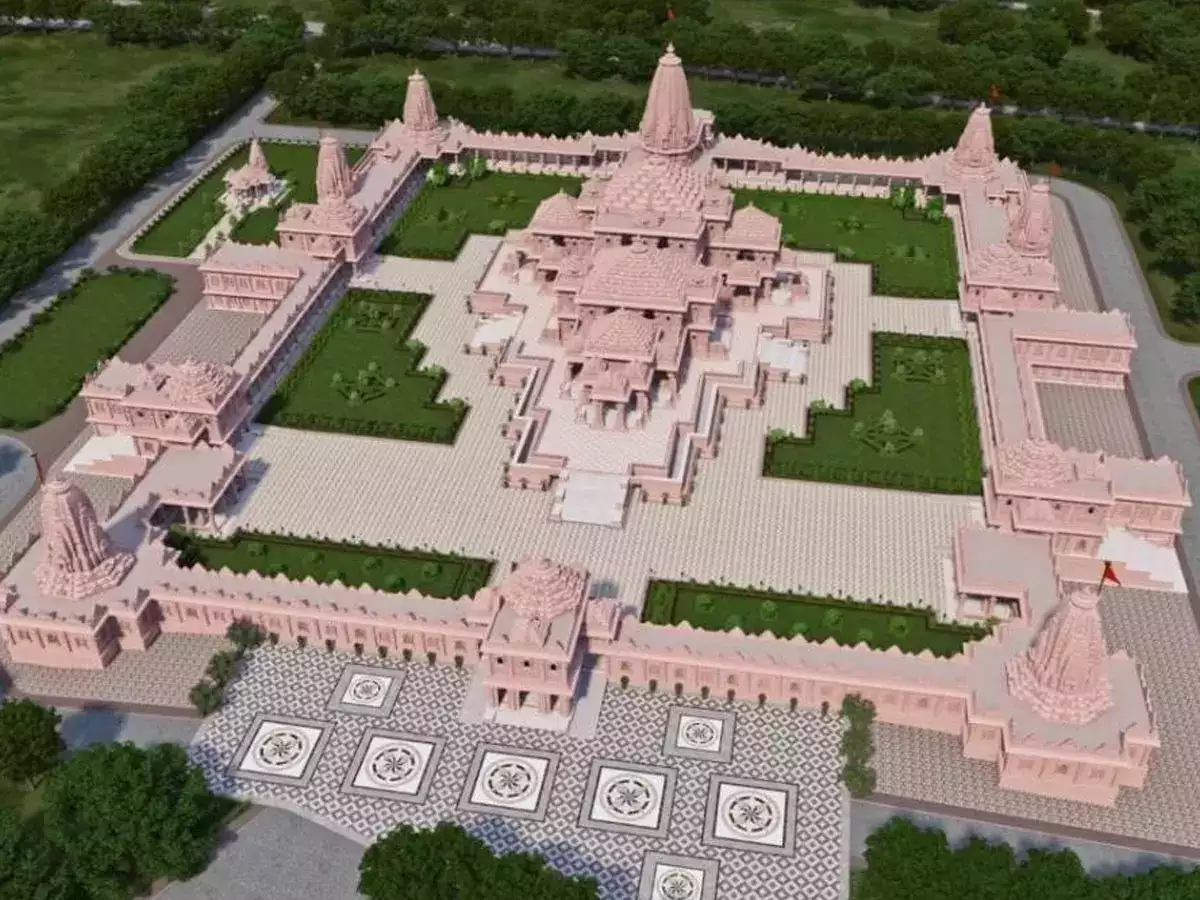Introduction
Nestled in the heart of Uttar Pradesh, India, the construction of Ayodhya’s Ram Mandir is not just a project but a resurgence of faith and spirituality. This temple, dedicated to Lord Rama, a principal deity in Hinduism, represents a pivotal chapter in India’s architectural and spiritual journey. In this blog post, we delve into the intricacies of the Ram Mandir’s construction, its historical significance, and the spiritual beacon it promises to be.
| Attribute | Details |
|---|---|
| Location | Ayodhya, Uttar Pradesh, India |
| Site | Ram Janmabhoomi (Birthplace of Lord Rama) |
| Architectural Style | Nagara (Indian temple architecture) |
| Designers | Sompura Family (Chandrakant, Nikhil, Ashish) |
| Temple Dimensions | Width: 235 feet, Length: 360 feet, Height: 161 feet |
| Temple Complex Includes | – Prayer Hall – Ramkatha Kunj (Lecture Hall) – Vaidik Pathshala (Educational Facility) – Sant Niwas (Saints’ Residence) – Yatri Niwas (Hostel for Visitors) – Museum – Cafeteria |
| Inauguration Date | 24th January 2024 |
| Expected Completion Date | 24th February 2024 |
| Total Allocated Area | 70 Acres |
| Total Temple Area | 2.7 Acres |
| Construction Company | Larsen & Toubro |
| Temple Budget | Rs 18,000 Crore |
| Deity | Lord Rama |
| Notable Features | – Shikhar (Spire) Height: 161 feet – Intricate Sandstone Carvings |
| Construction Phases | – Phase 1: Groundbreaking and Foundation (August 2020) – Phase 2: Ongoing (Expected completion: February 2024) |
| Use of BIM Technology | Yes (Building Information Modeling) |
| Inaugurating Authority | Indian Prime Minister Narendra Modi |
Historical Context and Supreme Court Verdict
The Ram Mandir is being erected at the historically significant site of Ram Janmabhoomi, believed to be the birthplace of Lord Rama. This site, also the location of the former Babri Masjid, was at the center of a longstanding dispute. In a landmark judgment in 2019, the Supreme Court of India allocated the disputed land for the construction of the temple, referencing a report from the Archaeological Survey of India (ASI) which suggested the presence of a non-Islamic structure beneath the demolished mosque.
The Sompura Legacy in Temple Architecture
The architectural brilliance of the Ram Mandir is attributed to the Sompura family, an illustrious lineage of temple architects. With a legacy spanning 18 generations, the Sompuras have designed over 100 temples worldwide, including the famous Somnath and Ambaji temples. The chief architect, Chandrakant Sompura, along with his sons Nikhil and Ashish, are spearheading this project, infusing the Nagara style of architecture into the temple’s design.

Image: Chandrakant Sompura (Credit: EBNW Story)
Design and Features of the Temple
The Ram Mandir, spanning 2.7 acres within a 70-acre allocated area, is a marvel of design and engineering. The temple’s dimensions are grand – 235 feet wide, 360 feet long, and 161 feet high. It will house various facilities, including a prayer hall, a lecture hall (Ramkatha Kunj), an educational facility (Vaidik Pathshala), residences for saints (Sant Niwas), and a hostel for visitors (Yatri Niwas), alongside a museum and cafeteria. Once completed, it will be the world’s third-largest Hindu shrine.

Image: Design and Features of the Ram Mandir (Credit: Pinterest)
Construction Milestones and the Role of Technology
Larsen & Toubro, the construction company, is implementing the project at an estimated cost of Rs 18,000 Crore. They have employed Building Information Modeling (BIM) technology, a significant leap in construction methodology, ensuring accuracy in design and resilience against natural calamities like earthquakes and high winds. The temple’s design includes advanced wind-resistant features, with wind tunnels to manage wind loads, a testament to both traditional architecture and modern engineering. Learn more about the role of BIM in construction at Using BIM in Civil Engineering.

Image: Construction Milestones and the Role of Technology (Credit: Hindustan Times)
Cultural and Spiritual Significance
The Ram Mandir is more than a structure; it’s a symbol of India’s rich cultural and spiritual heritage. It’s a place where history intertwines with faith, where architecture speaks the language of devotion. The temple is expected to be a major pilgrimage site, attracting devotees from across the globe, eager to witness this magnificent testament to spirituality and craftsmanship.
Conclusion
The Ayodhya Ram Mandir, set to open on January 24, 2024, is not just a testament to architectural prowess but a beacon of hope, unity, and spirituality. It stands as a new gateway to spirituality, promising to be a place where faith finds a physical manifestation in bricks and stones, and where devotion resonates with every carving and corner. The temple is a celebration of India’s spiritual ethos and architectural heritage, poised to leave an indelible mark on the hearts and minds of people for generations to come.
For those seeking to witness this marvel, the Ram Mandir Darshan Booking 2024 will commence soon after the inauguration, allowing devotees to register for a visit. The temple’s completion is a momentous event, eagerly anticipated by Hindus worldwide, marking a new era in India’s spiritual journey. The Ram Mandir at Ayodhya is not just a destination; it’s a journey into the heart of India’s spiritual ethos, a journey that beckons every soul seeking solace and spirituality.
Elevate your knowledge in Engineering and Construction by immersing yourself in Pinnacle IIT’s insightful blogs.

